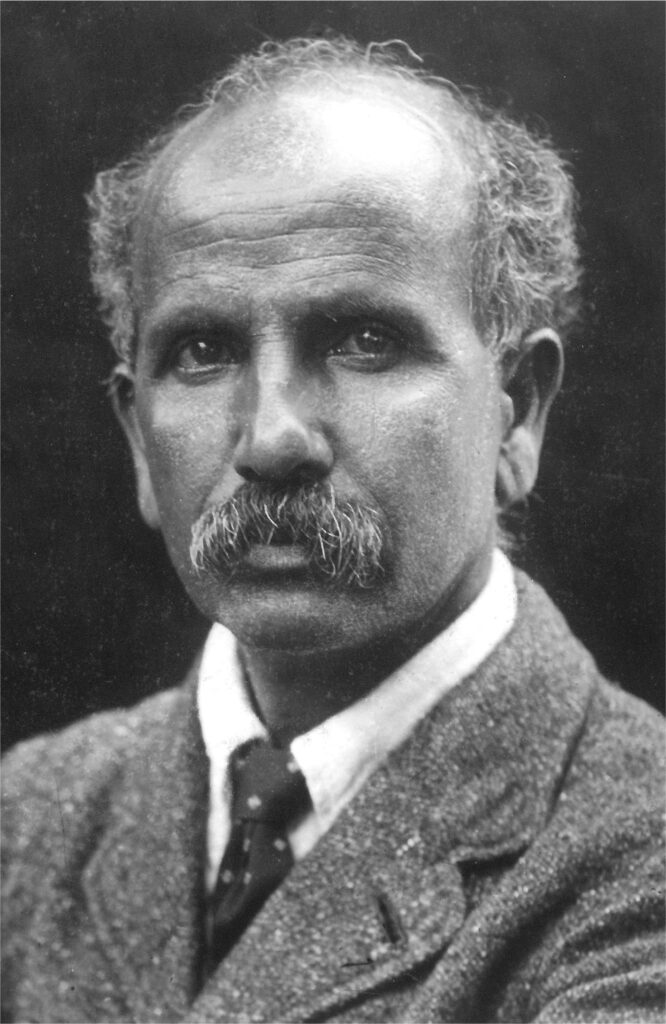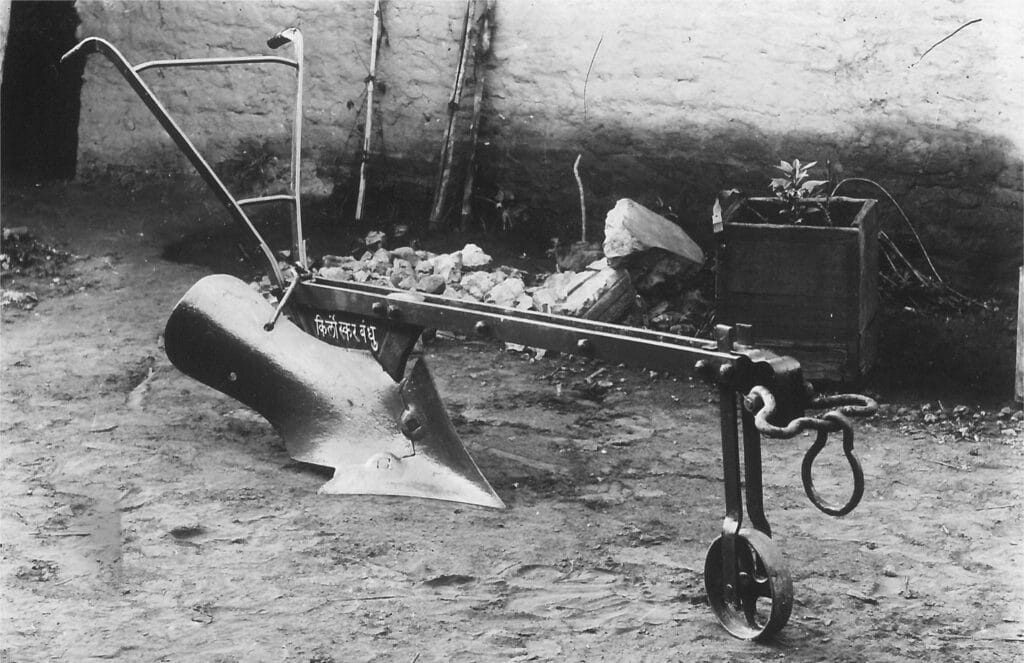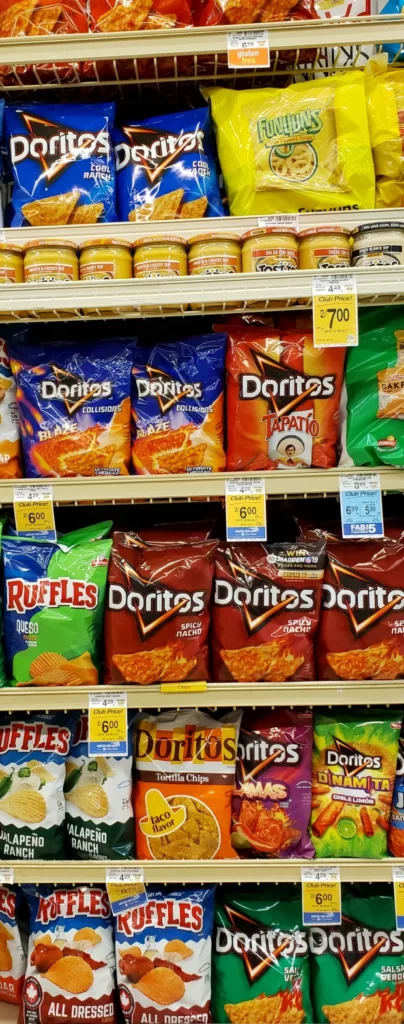Kirloskar – The Will to Succeed

Over the course of more than 130 years, the Kirloskar Group has been dedicated to helping India achieve economic independence and rapid industrialization. Products of this company were developed in the early twentieth century with the intention of hastening the adoption of modern farming practises.
Laxmanrao has three brothers and sisters. Two passions captivated him. The first was to logically disassemble whatever mechanical thing he encountered. Second, painting. He drew and painted using chalk, watercolours, and charcoal.
At 15, he told his father he wanted to quit school, move to Bombay, and study art. Father declined. He told his son that no painter could support a family. Laxmanrao ignored these warnings and asked his older brother, who loved him. Ramchandrarao convinced his father to let the boy move to Bombay, pledging to support him. Laxmanrao’s father reluctantly allowed him to go to Bombay in 1885. He studied painting for two years before discovering he was largely colourblind. Laxmanrao gave up painting but studied mechanical drawing at the J.J. School of Arts.

Laxmanrao started looking for work out of concern for his father and brother. After finishing his last year at the Arts School, he saw an ad in the newspaper for a mechanical drawing instructor at Bombay’s new VJTI. He was interviewed by principal J. P. Phythian. This professor said, “You seem young for a teacher. Copy these two drawings and show me how you do. ” Laxmanrao did such a terrific job that the principal appointed him an Assistant Teacher of Mechanical Drawing at Rs. 45 per month. Laxmanrao was an excellent student and instructor. While at the Institute, he read and subscribed to American Machinist, Scientific American, and Foundry. He worked at the institute’s well-equipped workshop, where he installed, operated, repaired, dismantled, and reassembled the newest machinery. Next, he copied machine blueprints and installed and repaired machinery. He used his workshop, which was well equipped with the newest machines, to install, operate, repair, dismantle, and reassemble them. Next, he started accepting jobs like making copies of machine drawings, installing machines and repairing them. His income rose, and he was able to assist his father to settle college expenses. Mr Phythian was so pleased with Laxmanrao’s success that he chose him to teach “Steam.”
In 1890, he was called to Dharwad to marry the woman chosen for him. Laxmanrao taught at the institution after returning to Bombay with his young bride. He wanted to start his own manufacturing firm but lacked money and luck. Two efforts failed: producing shirt buttons and paper packs for medications and ointments. His friends believed in him and loaned him money, but he never had enough to establish himself.
Laxmanrao spotted a Parsi man cycling in Bombay. Fascinated by this vehicle’s uniqueness, he inquired and learned that a bicycle costs 700 to 1000 rupees. He learned to ride a bike and wrote to Ramchandrarao in Belgaum. Ramchandrarao was inspired by this message and soon learned that affluent individuals in Belgaum wanted bicycles. Laxmanrao bought bicycles in Bombay and sent them to Belgaum, where Ramchandrarao sold them and taught them to ride for 15 rupees. It grew. Laxmanrao produced ‘Kirloskar Brothers’ letterheads and gained Belgaum’s bicycle dealership from UK manufacturers. Kirloskar Brothers published a catalogue to boost sales.
An Anglo-Indian was promoted above Laxmanrao in 1897. He quit his work, joined Ramchandrarao in Belgaum, and took over the bicycle store, knowing he wasn’t being paid his due and believing someone of Indian descent was not inferior.
When Laxmanrao took control, the bike shop’s sales had already declined. He had to work additional jobs to support our family and run the company. The brothers sought something to sell. They knew the affluent landowners, the rulers of princely kingdoms, and most of the Europeans in the region. Laxmanrao realised that people who purchased bicycles also bought windmills. Windmills were a “status symbol”, like bicycles, but more prominent. Few Europeans owned windmills. In those days, affluent Indians owned anything Europeans did. If a European had a windmill, so must an Indian. After receiving his first order, Laxmanrao contacted Samson Windmills of the USA to become their selling agent. Kirloskar Brothers sold so many windmills in one year that the makers gave them one, which Ramchandrarao put above their well in Belgaum.
Laxmanrao took whatever work he could find after realising the rise in high-priced items like windmills couldn’t persist. He created steel furniture for the Veterinary Hospital in Belgaum, built doors and window frames, and electroplated the Raja of Aundh’s family shrine. Old friend Balasaheb Pant Pratinidhi, the ruler’s son, gave him one assignment. Balasaheb had met Laxmanrao while he was a law student at VJTI. Balasaheb, who admired him, called him “Master.” Shriniwasrao Pant Pratinidhi, Rajasaheb of Aundh, was so delighted with Laxmanrao’s electroplating work that he commissioned him to build an assembly hall next to the temple. Laxmanrao worked. He sought and received 17,000 rupees to purchase materials for Aundh.
In 1901, Laxmanrao and his family left Belgaum to reside in Aundh, where he commenced the construction of the hall. Scarcely was the foundation work done, when Rajasaheb’s death brought off a series of highly disputed succession conflicts. Even though he’d invested a lot of money, he was advised to halt construction since no one could pay. He stopped employment and returned to Belgaum. He realised he could only make a living by selling his products.
Ramchandrarao filed and indexed the brothers’ American Machinist, Scientific American, and Foundry magazines. Laxmanrao saw a fodder cutter in one of these catalogues. The cutter would slice stems and roots that cattle reject into tiny pieces. The ad suggested salting the hay. The cattle would love the moist, salty feed, and the owner’s expenses would drop. If this assertion was accurate, reasoned Laxmanrao, the fodder-cutter would have high sales potential among Indian farmers, who would find it helpful and affordable. He tried one.
Laxmanrao copied it since it functioned effectively and met its promises. He erected a building as an extension to his shop, acquired a few pieces of equipment and fittings, and began making fodder cutters. He promoted his fodder-cutters in a way any farmer could understand. It was Kirloskar’s debut product. When sales started picking up, Laxmanrao acquired a 2-1/2-hp engine, a small lathe, a drilling machine, and a tiny emery grinder. Laxmanrao saw that an agricultural nation like India might be a huge market for farm tools.
Encouraged by the farmers’ reaction to his fodder cutter, he sought to create an iron plough using information from American periodicals. In 1904, he acquired additional equipment, opened a small iron foundry, and built six ploughs. These stayed unsold for two years. Now, Laxmanrao Kirloskar had all his investment locked up in machinery, foundry equipment, tools, unsold inventories, and losses from incomplete building projects at Aundh.
Then, Jacob Bapuji, Aundh State’s Diwan, wrote to Laxmanrao. This letter informed Laxmanrao that the funds sanctioned by Rajasaheb and frozen after his death had been released, allowing him to resume the building work he had halted in 1901. With his unrivalled knowledge of the minor kingdom and its reigning family, Jacob Bapuji was able to win the Government of India’s assent for Balasaheb’s accession as Raja of Aundh. The Kirloskars returned to Aundh after receiving Jacob Bapuji’s letter.
Jacob Bapuji was a capable Jew from the Bene Israel group in western Maharashtra. He spoke Marathi and English well and farmed land. He was a top Bombay government official who had been appointed Administrator of Aundh State. Laxmanrao was paid the promised sum after the hall was finished and, despite the delays, made a tidy profit.
After selling their cycling store in 1903, Kirloskar Brothers focused on agricultural tools.
Laxmanrao was concerned about his six unsold ploughs from two years ago. He got lucky after returning from Aundh. A guy introduced himself as “Mr Joshi,” a rich farmer from Satara. He wanted to know more about Laxmanrao’s ploughs. Laxmanrao showed him six unsold ploughs and told him why they had not been sold. Mr Joshi purchased all six ploughs, paid cash, and promised Laxmanrao a report. “I’ll advise other farmers to purchase your ploughs if they’re good,” he vowed.
Mr Joshi said that while Kirloskar ploughs were excellent overall, the tips wore out quicker than British ones.
Laxmanrao desired confirmation. He purchased two British-made ploughshares, pounded them, and then examined the points. Mr Joshi had said they were more durable. He and Ramchandrarao checked their Foundry data and identified the chilling (a mealing) procedure. Laxmanrao sent Mr Joshi more plough shares with the improved tips. Mr Joshi said the new chilled tips were as nice as British ones. Mr Joshi informed his farmer friends about Kirloskar ploughs, increasing demand. In the following two years, Laxmanrao sold 200 ploughs.

Laxmanrao was still short on funds. Demand for Kirloskar ploughs promised him a good future, but he didn’t have enough money to expand his plant or satisfy his increasing business’s daily financial demands. He wanted to borrow 10,000 rupees from the Bombay Banking Corporation’s Belgaum office, but the manager said he lacked adequate security. He was required to provide a guarantee from a bank-known individual with adequate assets to repay the loan. Laxmanrao’s application was denied without a guarantor. His failed loan application circulated across Belgaum and Laxmanrao’s wealthy circles. After the bank denied him, they knew nobody would lend him the money he needed.
However, his fears were unfounded. In 1907, a kind-looking middle-aged guy named ‘Ginde’ visited Laxmanrao’s office. Laxmanrao had heard about Mr Ramkrishna Vishnu Ginde, a wealthy moneylender famed for his fairness, but had never seen him. His arrival was unexpected. Mr Ginde spoke to Laxmanrao, “I understand you need a business loan.” True? Laxmanrao confirmed. “The bank denied my loan.” They told me I don’t have enough assets as collateral. Mr Ginde smiled and gave Laxmanrao 2000 rupees. He said, “I’ll bet on you.” “I’ve admired you. I trust you since you’re honest and hardworking. Please accept and return the money when you can.
When Laxmanrao and Ramchandrarao started to explore expanding the plant, they received a notice from the Belgaum Municipality asking them to vacate. Under the revised Town Planning Scheme, the factory was to be dismantled to make way for the Thalakwadi area.
Laxmanrao’s 12-year struggle would end in one stroke. As if that weren’t enough, he was told there was no provision in law to provide compensation, so he wouldn’t recover a single paisa. Laxmanrao wouldn’t have had the money to purchase fresh land, construct, and start anew.
Laxmanrao visited the Belgaum District Collector to request funding and better quarters. Mr Brandon was a Briton who liked Laxmanrao. Through this man’s good offices, Laxmanrao was given Rs 3000 as compensation, which was not enough to set up a new factory though. Desperate times.
Balasaheb Pant Pratinidhi, who succeeded his father as Raja of Aundh, visited Belgaum a few days after Laxmanrao got the municipal notice. Laxmanrao’s visit was to attend a Masonic Lodge meeting. Laxmanrao informed Rajasaheb that he had nowhere to go when the municipality tore down his manufacturing building.
Rajasaheb listened to Laxmanrao, whom he’d liked in Bombay. He believed in Laxmanrao. And so did Jacob Bapuji. As Rajasaheb stated to Laxmanrao, “Master, I can offer you all the land you desire in my state and all the money you need to build your business there.” Before I leave Belgaum tomorrow, please decide.”
Laxmanrao was affected by Rajasaheb’s offer, reinforced by Jacob Bapuji’s “this offer comes from the Raja, not the young student and Prince you met in Bombay. He still wanted to consult his brother and co-workers. Laxmanrao, Ramchandrarao, and K. K. Kulkarni met that evening to discuss Rajasaheb’s suggestion. And the three visited Rajasaheb the next day. Jacob Bapuji showed Laxmanrao a map of Aundh State and the railway line running through it, with one stop in the State Territory. Laxmanrao found Kundal Road handy. He pointed to a map. Laxmanrao drew a circle around the train station when Rajasaheb replied, “Mark the land you desire.”
Rajasaheb replied, “Take it; it’s yours forever.” After settling on the land, only money remained. Rajasaheb asked him how much he required. Laxmanrao answered, “10,000 rupees.” His donor said, “Take it.” Money was given quickly. Laxmanrao later learned that Rajasaheb had to borrow the money from a lender. The monarch paid Laxmanrao’s 6% interest from his pocket. The debt was returned quickly.
Laxmanrao and Ramchandrarao finally saw their property, a pencilled circle on a map. Kundal Road was a modest wayside station where trains stopped only to let off a few peasants en route to their villages or refill their water tanks. The station master and his employees had two-room stone huts nearby. The new owners passed an ancient, one-room Dharamshala constructed of rough stone and exposed to the train, its uneven floor was strewn with trash. Two sparse and stunted trees grew beside the structure, and beyond it stood a derelict warehouse erected by a merchant and abandoned in the woods. Two little temples existed on the opposite side. Laxmanrao and Ramchandrarao walked through prickly shrubs, cacti, and snakes.
As he felt the land’s antagonism against his dream factory and colony, he grew inflexibly determined to get his way. He’d tame and develop in this untamed country. The two optimists discussed a model industrial colony. Ramchandrarao’s layout, building designs, and road and park markings were executed by Laxmanrao. Toiling for years on 32 acres of arid, waterless terrain to develop Kirloskarwadi (or “Kirloskar’s hamlet” or “Kirloskarville”). He’d read about industrial townships in Europe and America, where owners constructed villages for workers. He wanted to create a company and house his employees. In 1910, he founded a factory in Kirloskarwadi.
The plough, originally designed for agriculture, became a symbol of change and revolution. Shri Laxmanrao Kirloskar was a social reformer and industrialist. He proposed ending untouchability when blind orthodoxy ruled rural regions. In Kirloskarvadi, he prohibited untouchability. He believed in social improvement and humanity. His night watchmen were ex-cons.
Reference
Cactus & Roses – An Autobiography by S L Kirloskar



